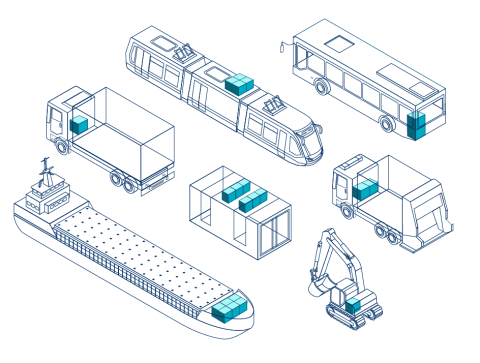Towards a standardised fuel cell module


The StasHH consortium has published the best practices to implement the StasHH standard for fuel cell modules (FCM) in end-user applications. It elaborates on the interfaces and support systems for the fuel cell module when applied in various applications (off-road, rail, road, stationary, maritime).
Project partner Damen issued the document and lead the consortium's OEMs in defining the best practices for the integration of the StasHH standard FCMs into their applications. In turn, the OEMs provided the experiences from their specific field with regards to safety, cooling system, air and hydrogen feed, and integration with pre-existing electrical and control systems. Although the exterior dimensions of the FCM are well defined in the StasHH standard, the application of the FCM will vary among applications. After all, it will be positioned in various places, orientations, inclinations, etc. and will be used in different circumstances and quantities (stacking FCMs).
Furthermore, the document presents two examples of process flow diagrams. As it seems for most applications the standard interface is effective and is able to scale with multiple FCM’s. Some FCM have already been used successfully in practice this way. These tend to be mostly natural ventilated installations with emergency shutdown protection. As a result, the StasHH standard will suit every application in those cases. For maritime applications however, an enclosed installation with double barrier protection is needed, in which the FCM is harder to install. Hence, the consortium advises further research into this.
Download the document (or ‘deliverable D3.6 - OEM integration of standard FCM’) here or under Publications on the StasHH website.